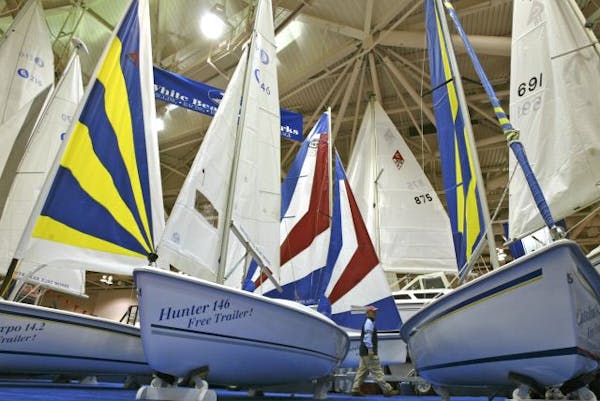As a naturalist at Tamarack Nature Center in White Bear Township, Kim Bauer is passionate about families spending time together outdoors, but she is also the voice of reason for kids (and adults) as they head out on the trails.
"I tell them, 'If your hands get cold, the quickest way to warm them up is to put them on the back of your neck or under your arms.' That's my tip," said Bauer with a laugh. "Dress warmly and dress in layers, because in my experience, complaining is definitely contagious."
The benefits of being outdoors, especially for children, far outweigh the extra time spent bundling up. Mary Vidas, chair of the Minnesota Children & Nature Connection, said for many kids more accustomed to the world of video games, time spent in the natural world can be eye-opening.
"When you take kids out on a trail, all of a sudden they will start noticing what's around them," said Vidas, who is also the director of Tamarack Nature Center. "It's like we're hugging them with nature, and it is a marvelous experience."
The Minnesota Children & Nature Connection, an initiative supported by the Minnesota Recreation and Park Association, was launched three years ago, not long after the publication of "Last Child in the Woods: Saving Our Children From Nature-Deficit Disorder."
The book, by Richard Louv of San Diego, a founder of the national nonprofit Children & Nature Network, "raised the very real possibility this could be the first generation of children not to have a significant connection to nature and the outdoors," said Vidas.
Nature left behind
Parents who are now in their late 20s and 30s were raised during a period "when technology took all our attention," said Vidas. Many were introduced to video games and organized sports instead of hiking trails and campgrounds.
"Kids between the ages of 3 and 16 are our target group, but our secondary audience is parents," said Vidas. "Some parents are reluctant to take their kids out in nature because the kids will ask all kinds of questions the parents can't answer since they didn't spend much time outdoors when they were younger."
To remedy this, the Children & Nature Network promotes the idea of a "green hour" in every family's daily schedule and, if this isn't doable, suggests that families commit to spending time together outside once a month.
Minneapolis Parks offers several programs for kids and families, including a four-week series of Nature Play Groups for parents and children under 5, now being held at four area parks -- Bottineau, Logan, Lyndale Farmstead and Matthews. The hourlong sessions really give the parent and child an opportunity to lead their own adventures.
"Depending on the season, we have things like magnifying glasses, snowshoes and other resources for families who just want to play outside and have a positive experience in nature," said Jamie McBride, administrator for the naturalist programs.
Kids having fun
Simple activities -- such as playing in the back yard, taking a walk around the block or visiting a local park or nature center -- can expose children to the beauty of the natural world, even in the heart of the city, said Vidas.
When kids play outdoors, it helps them build stamina for all the time they need to spend sitting still in school. If they do an activity such as snowshoeing or cross-country skiing, their fine-motor skills can improve as a result of walking in sequence and developing a rhythm in their movements.
Socially, kids can really thrive when they spend time in a group outside. "There is a connectedness kids can develop to a sense of place in nature," Vidas said. "They will discover somewhere, besides home and school, where they can feel welcome."
Julie Pfitzinger is a West St. Paul freelance writer.
Have an idea for the Your Family page? E-mail us at tellus@startribune.com with "Your Family" in the subject line.

Review: Sibling pop band AJR put on a fun show in St. Paul, but not a good concert
Israelis grapple with how to celebrate Passover, a holiday about freedom, while many remain captive
A Georgia beach aims to disrupt Black students' spring bash after big crowds brought chaos in 2023
Today in History: April 18, San Francisco's great earthquake sets off fires, thousands die

